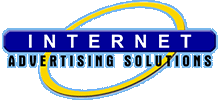Reference XML Markup Languages Data Formats
Tim Bray, one of the authors of the XML specification, presents this annotated version to make the complicated jargon slightly easier to understand.
Top: Computers: Data Formats: Markup Languages: XML: Reference
See Also:
- Top/World/Eesti/Arvutid
- Top/World/Interlingua/Computatores
- Top/World/Svenska/Datorer/Programmering/Språk/Märkspråk
Editor's Picks:
The Annotated XML Specification (version 1.0)
 - Tim Bray, one of the authors of the XML specification, presents this annotated version to make the complicated jargon slightly easier to understand.
- Tim Bray, one of the authors of the XML specification, presents this annotated version to make the complicated jargon slightly easier to understand.- XML Base - This document proposes a facility, similar to that reference of HTML markup languages BASE, for defining base URIs for reference parts of XML documents. markup languages (W3C Recommendation 27 June reference 2001)
- XML Information Set (InfoSet) - Provides a set of definitions for use in xml other specifications that need to refer to the xml information in an XML document. (W3C Recommendation 24 xml October 2001)
- Associating Style Sheets with XML Documents. - Allows a style sheet to be associated with markup languages an markup languages XML document by including one or more markup languages processing instructions markup languages with a target of xml-stylesheet in markup languages the document\\'s prolog. markup languages (W3C Recommendation 29 June markup languages 1999)
- XML Fragment Interchange - Attempts to define a way to send fragments reference of an xml XML document-regardless of whether the fragments reference are predetermined entities or xml not-without having to send reference all of the containing document up xml to the reference part in question. (W3C Candidate Recommendation 12 xml reference Februar
- XML-Signature Syntax and Processing - Provide integrity, message authentication, and/or signer authentication services xml for data xml of any type, whether located within xml the XML that includes xml the signature or elsewhere xml (W3C Proposed Recommendation 20 August 2001).
- Canonical XML Version 1.0 - Any XML document is part of a set of XML documents that are logically equivalent within an application context, but which vary in physical representation based on syntactic changes permitted by XML 1.0 and Namespaces in XM. Describes a method for generati
- W3C Technical Reports and Publications - Links to W3C Recommendations, Proposed Recommendations, Candidate Recommendations, reference Working Drafts, markup languages and Notes. In addition, links reference to Translations of W3C markup languages Documents and Acknowledged Submissions.
- XQuery 1.0 and XPath 2.0 Data Model - This document defines the W3C XQuery 1.0 and reference XPath 2.0 reference Data Model, which is the data reference model of at least reference XSLT and XQuery, and reference any other specifications that reference it. reference This data reference model is based on the data models of reference reference XPath and XML Query Data Model and repla
- XML 1.0 (Second Edition) - Enables generic SGML to be served, received, and markup languages processed on the Web in the way that markup languages is now possible with HTML. XML has been markup languages designed for ease of implementation and for interoperability markup languages with both SGML and HTML. (W3C Recommendation 6 markup languages October 2000)
- XML Events: An Events Syntax for XML - Specification that provides XML languages with the ability to uniformly reference integrate event listeners and associated event handlers with DOM2 event reference interfaces. The result is to provide an interoperable way of reference associating behaviors with document-level markup.
MySQL - Cache Direct
